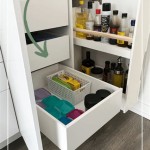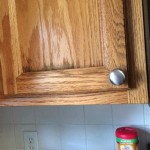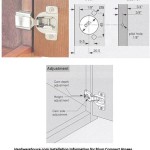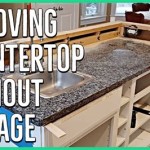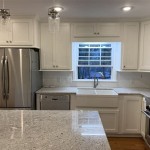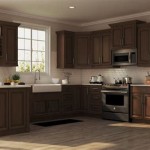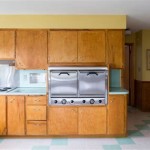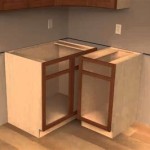How to Choose the Right Kitchen Hob and Hood
Selecting a kitchen hob and hood is a crucial decision when designing or renovating a kitchen. These appliances are central to the cooking experience and play a vital role in maintaining a clean and comfortable kitchen environment. The right choice depends on various factors, including cooking style, kitchen size, budget, and aesthetic preferences. A thoughtful approach to this selection process will ensure a functional and enjoyable kitchen space.
Before diving into the specifics of choosing a hob and hood, it's essential to understand their respective roles. The hob, also known as a cooktop, is the cooking surface where pots and pans are placed to heat food. It can be powered by gas, electricity, or induction technology. The hood, also known as a range hood or extractor fan, is positioned above the hob to remove smoke, grease, and odors generated during cooking. A properly functioning hood is essential for maintaining air quality and preventing grease buildup on kitchen surfaces.
Key Point 1: Understanding Different Types of Hobs
Choosing the right type of hob is the first step in the selection process. Each type offers distinct advantages and disadvantages in terms of performance, efficiency, and ease of use. The primary hob types are gas, electric, and induction.
Gas Hobs: Gas hobs are a traditional choice known for their responsive heat control. Cooks can adjust the flame intensity instantly, providing precise control over the cooking process. Gas hobs are generally less expensive to purchase than induction hobs, although installation may require a gas line connection. The downsides include lower energy efficiency compared to induction and electric hobs, and the open flame can pose a safety risk if not properly managed. Cleaning can also be more challenging due to the grates and burner components.
Electric Hobs: Electric hobs come in two main forms: coil and ceramic. Coil hobs are the most basic type, featuring exposed heating coils. They are the least expensive option but offer the slowest heating times and the least precise temperature control. Ceramic hobs have a smooth, glass-ceramic surface with heating elements beneath. They are easier to clean than coil hobs and offer more even heat distribution. However, they still take longer to heat up and cool down compared to induction hobs. Electric hobs are generally less energy efficient than induction hobs.
Induction Hobs: Induction hobs use electromagnetic energy to directly heat the cookware. This technology offers several advantages, including rapid heating, precise temperature control, and high energy efficiency. The surface of an induction hob remains relatively cool to the touch, reducing the risk of burns. Induction hobs are also easy to clean due to their smooth surface. The primary drawback is the higher initial cost and the requirement for induction-compatible cookware. Not all pots and pans will work with an induction hob; they must have a magnetic base.
Key Point 2: Selecting the Right Type of Hood
The range hood is a critical component of a functional kitchen, ensuring that cooking fumes, grease, and odors are efficiently extracted from the air. Choosing the right type of hood involves considering factors such as kitchen layout, cooking frequency, and ventilation requirements. There are several types of range hoods available, each designed for specific kitchen configurations.
Under-Cabinet Hoods: Under-cabinet hoods are mounted beneath kitchen cabinets, providing a discreet and space-saving solution. They are typically the most affordable option and are suitable for kitchens with standard cabinet configurations. However, their extraction power may be limited compared to other hood types, making them better suited for light cooking.
Wall-Mounted Hoods: Wall-mounted hoods are installed directly on the wall above the hob, without any surrounding cabinets. They are available in a wide range of styles and sizes, offering a more visually prominent design element. Wall-mounted hoods typically offer higher extraction rates than under-cabinet models and are suitable for kitchens with moderate to heavy cooking.
Island Hoods: Island hoods are designed for kitchens with island cooktops. They are suspended from the ceiling above the island and provide ventilation from all sides. Island hoods are often a focal point in the kitchen and are available in a variety of contemporary designs. They require careful installation to ensure proper ventilation and stability.
Downdraft Hoods: Downdraft hoods are integrated into the cooktop or countertop and extract air downwards. They are a good option for kitchens where a traditional overhead hood is not feasible or desired. However, downdraft hoods are generally less effective at capturing rising fumes compared to overhead models. They are best suited for kitchens with limited cooking activity.
Insert Hoods: Insert hoods, also known as built-in hoods, are designed to be integrated into custom cabinetry or a decorative chimney. They offer a seamless and streamlined appearance, blending seamlessly with the kitchen design. Insert hoods require careful planning and installation to ensure proper ventilation and integration with the surrounding cabinetry.
Beyond the type of hood, another important consideration is whether to choose a ducted or ductless model. Ducted hoods vent air to the outside through ductwork, providing the most effective removal of smoke and odors. Ductless hoods, also known as recirculating hoods, filter the air and recirculate it back into the kitchen. While ductless hoods are easier to install, they are less effective at removing moisture and grease, and the filters require regular replacement.
Key Point 3: Factors to Consider When Making a Decision
Beyond the specific features of hobs and hoods, several practical factors should influence the final decision. These include kitchen size and layout, cooking habits, budget, and aesthetic preferences.
Kitchen Size and Layout: The size and layout of the kitchen will dictate the appropriate size and type of hob and hood. For smaller kitchens, a compact hob and an under-cabinet hood may be sufficient. Larger kitchens with island cooktops may require a more powerful island hood to effectively ventilate the space. The placement of the hob relative to windows and doorways should also be considered to minimize drafts that can affect ventilation performance.
Cooking Habits: The frequency and type of cooking activities will influence the required power and features of the hob and hood. For individuals who cook frequently or prepare complex meals, a high-powered hob with precise temperature control and a robust range hood with high extraction rates are essential. For those who primarily cook simple meals, a more basic hob and hood may suffice.
Budget: The budget available for the hob and hood will narrow down the options and guide the selection process. Gas and electric hobs are generally less expensive than induction hobs. Under-cabinet hoods are typically the most affordable type of range hood, while island hoods and custom insert hoods are the most expensive. It's essential to balance the desired features and performance with the available budget.
Aesthetic Preferences: The hob and hood should complement the overall design and style of the kitchen. Hobs are available in a variety of finishes, including stainless steel, black glass, and white ceramic. Range hoods also come in a range of styles, from sleek and modern to traditional and ornate. Consider the existing cabinetry, countertops, and appliances when choosing the finish and style of the hob and hood to create a cohesive and visually appealing kitchen space.
Energy Efficiency: Energy efficiency is an increasingly important consideration for kitchen appliances. Induction hobs are the most energy-efficient type of hob, followed by electric and gas hobs. Look for range hoods with energy-efficient motors and LED lighting to minimize energy consumption. Consider the long-term cost savings associated with energy-efficient appliances when making the final decision.
Installation Requirements: Before purchasing a hob and hood, it's essential to understand the installation requirements. Gas hobs require a gas line connection, while electric and induction hobs require adequate electrical wiring. Range hoods require ductwork for ducted models and proper mounting hardware for all types. It may be necessary to hire a professional installer to ensure safe and proper installation.
Maintenance and Cleaning: The ease of maintenance and cleaning should also be considered. Smooth-surface hobs, such as induction and ceramic hobs, are easier to clean than gas hobs with grates and burners. Range hoods with removable filters are easier to clean than those with integrated filters. Consider the frequency of cleaning required and the ease of accessing and cleaning the various components.
Selecting the appropriate kitchen hob and hood requires a careful evaluation of various factors. Understanding the different types of hobs and hoods, considering the kitchen size and layout, cooking habits, budget, and aesthetic preferences, and understanding the installation and maintenance requirements are all important aspects of the decision-making process. By taking a thoughtful and informed approach, homeowners can choose a hob and hood that meet their specific needs and enhance the overall cooking experience.

Choosing Cooker Hood Rinnai Malaysia

How To Choose The Best Cooker Hood For Your Kitchen Fujioh

Design A Modern N Kitchen Choose The Best Hob And Chimney

How To Choose The Right Cooker Hood For Your Kitchen Goodhomes

Choosing Cooker Hood Rinnai Malaysia

Range Hood Guide 2024 Forbes Home

Kitchen Remodeling What To Consider When Adding Range Hood

Hood Guide Smeg

How To Choose The Right Range Hood For You And Your Kitchen

How To Select The Right Hob And Chimney For An N Kitchen Tips
Related Posts

